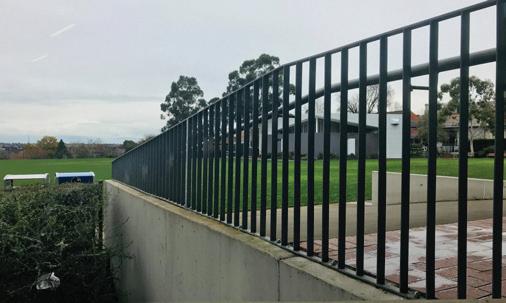Hamish Galbraith, Year 12
Refuge e s Commit Crime s Refugees commit crimes. Refugees take our jobs. Another Sudanese gang attack in Melbourne. Muslims are terrorists. These are racist headlines that we, as Australians, have become all too familiar with and have shaped our views as a nation. How much truth do they really have though? Do you know how many terrorist attacks have been committed by Muslims on Australian soil in the past hundred years? One. One terrorist attack carried out by a Muslim person in the past 100 years. In fact, only a small percentage of all Australian crime is committed by those of Middle Eastern descent and even less than that by refugees from African nations such as Sudan. Yet all we hear is that refugees commit crimes. This xenophobic thinking has led to Australia accepting just 17,000 refugees or 0.07% of all the world’s refugees. This is despite being the sixth largest country by area and the seventh least crowded country on the planet with just three people per square kilometre. This is compared to the 118 people per square kilometre in Syria, yet people still claim that we simply have no space or resources to care for these people. Today, I will be advocating for vast increases in Australia’s refugee intake, and will be highlighting the indisputable benefits that increasing the refugee intake presents. Close your eyes for a moment and imagine you are Ahmed, an 11-year-old boy, fleeing war-torn Syria, crossing the Mediterranean Sea by boat. It is freezing. As you close your eyes, you think of your destroyed home. Home, the term seems so foreign. You wonder, will I ever find a safe place that I can finally call home? As the waves repeatedly beat the weak hull of the boat, it slowly capsizes, tipping you out into the freezing waters. As you cling to your lifejacket, begging it to help you stay afloat, you realise that many are without because they had to be bought in Libya and because the smuggler promised that the boat would be safe. He promised. With each rolling wave you see your parents slowly disappearing towards the horizon.
Refugees go through all that suffering and struggle, yet we still claim we have no room, or they don’t need to come here and are just seeking to ‘take our jobs’. This point of view is outdated and lacks basic understanding and consideration, failing to take into account the statistics or economics surrounding the decision. Currently, Australia accepts just 17,000 refugees every year, a mere 0.07% of our overall population. If we were to increase this percentage to just 1%, we would take in more than 230,000 more refugees annually. It is at this point that many people jump straight to the ‘We don’t have room argument’. It is true that our cities continue to grow exponentially and that by 2050, 10 million people will call Melbourne home, but the rural areas of our countries are crying out for a workforce. In rural centres across Australia, there is a massive labour shortage and job surplus. ABS data shows some industries are reporting job vacancies as high as 44%, whilst a 25% job vacancy for professionals and managers has left many residents short of luxuries and even basic needs as businesses close due to a staff shortage, causing people to flood back into the cities in search of work. A refugee workforce of 250,000 people per year, people who are keen to work and pay back the country which has given them a second chance – a chance to build a new life – sounds like the perfect solution to this problem. It also demonstrates the lack of understanding inherent in comments about refugees coming to take our jobs and fill up our country. Figures from the Department of Immigration suggest that almost a third of refugees are professionals who have trained in a particular area, whilst a further 25% are the skilled trade-qualified workers that a growing regional Australia needs. The increase in professionals, such as refugee doctors and lawyers, in regional and rural areas would give inhabitants of those areas better access to vital resources, increasing their standard of living. The Australian Government could offer a modified New Start allowance to refugees on the condition they remain in regional areas. Assimilating refugees into Australia will not only help the economy through taxes and spending it will also save the government over $1 billion in the operating costs of offshore detention centres. The offshore detention of refugees is not only morally corrupt, but also illegal. Under Article 14 of the 1948 Universal Declaration of Human Rights, everyone has the right to seek asylum and the 1951 Refugee Convention prohibits states from imposing penalties on those entering ‘illegally’ who come directly from a territory where their life or freedom is threatened. Australia is a signatory to both these agreements and hence has an obligation to follow these laws and accept refugees. A m p e rs an d 2 0 19 41





















